Molitor stands among a few of her chainsaw carvings Oct. 4 by her workshop near Rockville. Her business, Mare’s Bears & More, sells her artwork online and at craft fairs.


Molitor stands among a few of her chainsaw carvings Oct. 4 by her workshop near Rockville. Her business, Mare’s Bears & More, sells her artwork online and at craft fairs.






ROCKVILLE – The coronavirus pandemic slowed down a lot of activity, but it was the catalyst for Mary Molitor’s new adventure.
When the cleaning business she ran with her sister for 23 years suddenly came to a slow crawl, she used the time to learn a new artform.

“I always loved chainsaw carvings,” Molitor said. “I don’t know why, but I just decided to try it.”


In just a few short years, Molitor’s experimentation has become her business.
Mare’s Bears & More offers Molitor’s own style of






painted chainsaw carvings at craft fairs and online.



Molitor takes care of her granddaughter three days a week, but the rest of her time is about artmaking. She chainsaw carves two days a week and many evenings. Weekends are also used for carving unless she is showing her creations at craft fairs.

Her carvings come in various sizes and subject matters. She has made gnomes, cardinals, eagles, turtles, dogs and more. She also carves wooden pumpkins, trees, American flags and other objects. Molitor even once carved a grumpy old man a customer requested. She least enjoys carving dogs because they take so much longer for her.
Her very first chainsaw carving was of a bear.
“I think my kids lied to me because they told me it was good, so I kept going,” Molitor said. “But, it





really wasn’t good.”
Molitor began watching YouTube videos to learn chainsaw carving techniques and hone her craft. Once she had carved and painted enough sculptures to feel confident, she brought them to the Annandale Flea Market. The reactions of shoppers let her know she had put her own stamp on chainsaw art.
“People would say that the faces were so cool,” Molitor said. “They said they all have such different characters. I guessed then that it had become my own style.”
Her family was noticing as well.
“My one son said, ‘It’s surprisingly good,’” Molitor said.















Published
Copyright
Sauk
Phone:

Diane
Story ideas
grace.j@star-pub.com


Kayla Hunstiger, 320-247-2728
kayla@saukherald.com

Missy Traeger, 320-291-9899 missy@saukherald.com


Tim Vos, 320-845-2700
tim@albanyenterprise.com

Mike Schafer, 320-894-7825 mike.s@dairystar.com


Warren Stone, 320-249-9182

warren@star-pub.com
Jaime Ostendorf, 320-309-1988
Jaime@star-pub.com
Bob Leukam, 320-260-1248 bob.l@star-pub.com
 PRODUCTION STAFF Pat Turner Amanda Thooft Nancy Powell Maddy Peterson Cheyenne Carlson Karen Knoblach Annika Gunderson
PRODUCTION STAFF Pat Turner Amanda Thooft Nancy Powell Maddy Peterson Cheyenne Carlson Karen Knoblach Annika Gunderson
Deadlines:
Country Acres will be
the first Fridays of April, May, June, September, October and November, and the third Friday of every month.
for news and advertising is the Thursday before

Publications bli ti
“Committed to being the eyes and ears of
Her husband, Tom, helps out as well.
“He helps me as much as he can, such as when we have to move logs around and this and that,” Molitor said. “He is super duper supportive.”
Molitor makes most of her carvings out of pine wood. She uses other woods depending on the work.
“I have a lot of wood around here,” she said. “I’m always on the lookout for wood.”
After she finds the right piece, her craft becomes a balance of instinct and precision.
“I just start cutting,” she said.
A carving such as an average-sized bear, from the first chainsaw strike to the last stroke of paint, takes six to seven hours. If she is carving an eagle or another animal, she likes to start with a picture of the real deal so she can include the main characteristics of the animal.
“I block out the design with a regular chainsaw, then I use chainsaws with carving bars on them, which have a smaller end to work with,” Molitor said. “After the chainsaw, I use an angle grinder for sanding and a die grinder for eyes and to help with the mouth, details
Mary Molitor stands by her workshop that she built with proceeds from her business, Mare’s Bears & More. She makes a wide variety of chainsaw carvings from her own designs or from customer requests.

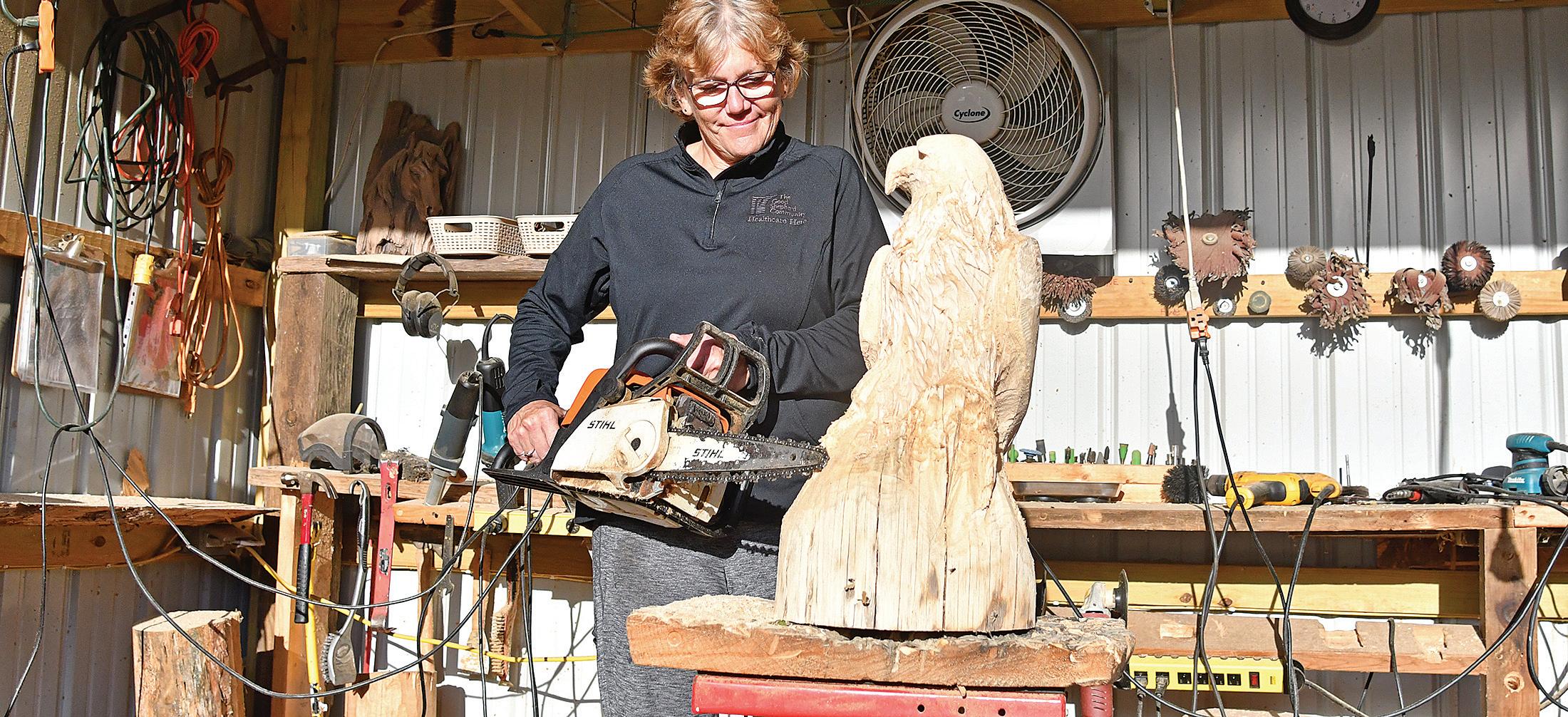
like that.”
Before painting her carved sculptures, she coats the wood two or three times with Australian timber oil, which seeps into the wood and prevents, or at least slows down, cracking and what
carvers call checks, which are small cracks that carved wood can develop.
Then she paints her sculptures, using spray paints,
A waving American flag is one of the many varieties of chainsaw carvings that Mare’s Bears & More offers. Artist Mary Molitor sells her creations online and at craft fairs.

airbrushes or paintbrushes, whatever is best for the particular design.


“I don’t like the painting part,” Molitor said. “I like the carving part best.”


Molitor knew she was creating her own niche when she started to make an income from her artwork.

“I bought things (for making more carvings) as I made money,” she said.

She purchased more tools and eventually saved enough to build a workshop about a year and a half ago behind her house on the family’s farm near Rockville. Her husband, Tom, is an organic dairy farmer with his brother, Joe. Mary and Tom raised four children and now have two grandchildren.

Before becoming a chainsaw carver, Molitor was no stranger to chainsaws and other tools. She grew up in nearby Luxemburg and went to what was then called the St. Cloud Technical College for carpentry. When she graduated from the program in 1984, construction of St. Cloud’s 10th Street bridge was just beginning, so she went straight there and got a job. She became a union carpenter, working on bridges and schools until she married and began helping on the farm. After taking time to raise her young family,
(Above) Mary Molitor shows one of the piles of wood near her workshop that she has on standby for her chainsaw carvings. She uses mostly pine wood because it is strong but also more easily carved.

(Right) Some of Mary Molitor’s artwork is stored in her workshop near Rockville. Molitor makes chainsaw carvings in a wide array of sizes and subjects for her business, Mare’s Bears & More.

she and her sister began the cleaning business. Throughout the years, Molitor made small hand carvings and some relief carvings, but she had not studied art. Molitor did not even seek out art classes in school.
“I only took them if we had to,” she said.

Her art talent seems to have been naturally inside of her. One reason she is drawn to her artform is the physicality
of it. Chainsaw carving is hard work.
“Chainsaws are kind of heavy, and you have to use your arms a lot,” Molitor said. “Sometimes I go in very sore at night. While I’m working, I

Molitor page 4
ends 12/31/22. Available at participating and eligible dealers only. Offer may vary by product type, series, model and select units in dealer’s current inventory. Must take delivery from dealer stock by 12/31/22. Offers available on new equipment in US and Canada only. Some restrictions apply. Length of contract and rate may vary. Monthly payment subject to change. Prior purchases not eligible. See dealer for details. Financing provided on approval of credit by authorized Bobcat finance providers to well-qualified buyers. Administrative fees may apply. Offer not available to government accounts, national accounts and municipal/utility bid customers. Bobcat Company reserves the right to extend or discontinue any of these programs at any time without prior notice.














(Above) Chris and Stacey Kremer’s 300 head of bison cows, with about 150-175 calves at their side, graze in a paddock Oct. 4 near Hillman. Breeding bulls are also intermixed with the herd.


(Left) Stacey and Chris Kremer pause on a beautiful fall day to discuss their ranching operation near Hillman. In July of 2019, the couple sold their farm in southwestern Minnesota and moved 230 miles northeast, where they have 1,500 acres for a larger bison herd.







 BY DIANE LEUKAM STAFF WRITER
BY DIANE LEUKAM STAFF WRITER







HILLMAN – At the end of a deadend road near Hillman lies a scenic ranch, seemingly in the middle of nowhere. In the quiet, Chris and Stacey Kremer can sit on their patio and look out over their green pasture land with fall-colored trees in the distance. The soft grunts and snorts of bison break the silence as the herd makes its way through the pasture.



On Oct. 4, they talked about their bison operation.
“If you sit here and watch in a 24hour period, they will meander about the 120 acre paddock, walking around it about three to five times a day,” Chris said. “They are constantly moving, grabbing a mouthful of grass; that’s what they did back then and that’s what makes them unique to cattle.”

The beauty of the place is a bit heav-

enly, and they never get tired of the view.
“Some days, it’s a little overwhelming,” Chris said. “Every morning, I’ll buzz around checking fences and, every once in a while, you just gotta stop and look around.”
Stacey agreed.
“We just [need to] get past the initial move,” she said. “We just want to take advantage of the peacefulness and scenery.”
That move came after many years in agriculture. They had farmed on Chris’s home farm near Reading for 20 years before looking for greener pastures. There was none to be found in their area; searches in South Dakota came up empty as well. In July of 2019, they left the Kremer family farm and moved 230 miles northeast to a 1,500-acre ranch near Hillman. The move was challenging, but they haven’t looked back on their decision.











“The sentimental part of the farm [was hard], and our friends of course, but this place just felt so right,” Stacey said.
Having raised bison for 27 years prior to the move, the difference is now, there are ample acres for them to harvest hay and increase their breeding herd. There are 300 head of cows currently on
pasture with about 150175 calves at their side, and 23 breeding bulls on hand. In addition, there are lots for their 300-400 head of feeders each year.
Raising bison is a natural fit for the Kremers, whose family includes their daughter, Madelyn, and son, CJ.

“What I like about the bison most is they’re
mostly hands-off,” Chris said. “As long as you keep them happy and keep them in the fence, they do their own thing, what nature’s taught them to do.”
That includes calving.
“We don’t assist with calving – if you do, they’ll try to kill you,” Chris said.
“You keep attention to their body movements; we’ve had many close calls which you learn from.”
When twins are born, they often need to bottle-feed one of them. They said bison rarely have twins, but when they do, they will seldom care for both of them.
“Chris is really good, he goes out there and he knows everybody and who belongs to who, so he knows if something is off,” Stacey said. “He’s found most of them.”
One of the bottle-fed babies is special to the family. He was born on Earth Day a couple years ago. Stacey and CJ discovered him while they were out and about on the ranch.

“The property was still new to us so we were taking a hike,” Stacey said. “There was a cow laboring, so we watched for a while. We left and came back a couple hours later and saw that she’d had twins. The one was getting pushed off so we were
able to grab him and we bottle-fed him. His name is Bruce.”
Bruce is still in the herd; he has special privileges and has become a sort of ranch mascot. When he was very small, he would crawl under the fence of his pen because of his desire to be with the family.

“It was the craziest thing; we’d be sitting there having a bonfire and somebody was nudging your back and here it was Bruce,” Stacey said. “No matter if he is a breeder or not, he will live out his days here with us.”
One thing the Kremers find interesting during calving season in spring, is how the cows will often group together to calve. Each day they choose a different area.
As the summer goes on, the baby calves’ coats change from their reddish color at birth to brown.
When in a pasture, the animals mostly ignore the Kremers, but safety has to be top of mind. A four-wheeler or side-byside are the main mode of transportation. They will walk in a feedlot with younger animals, but they stay close to a fence.

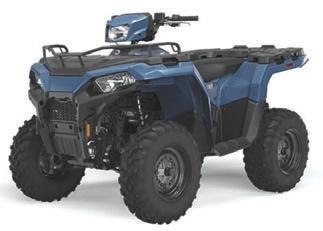


On Oct. 4, the Kremers watched their herd on a pasture to which they had just been moved. The soft, low sounds permeated the air, along with dust as they walked a trail. With their strong herd bond, they are equipped to handle the wolves in the area.
“I’m not saying the wolves couldn’t do something, but with the calves
they’re so protective –one gives a grunt and the whole herd will come,” Chris said. “They’ll kind of respect each other.”

There are other predators as well.
“I’ve never lived anywhere like this,” Chris said. “There is everything you can imagine, coyotes, wolves, bears, mountain lions our neighbors have on camera, bobcats, eagles that have a nest out to the east.”
When fall rolls around, the rutting season goes into full swing.
“During the rut, you have to be really careful,” Stacey said. “It’s cool, all the snorting – it’s fun to watch, but you have to be careful. We haven’t had a herd this big before, but it’s been interesting the last couple years.”
In late fall, usually around mid-November, the Kremers work the whole herd, which will likely take two days. Animals are run through a hydraulic chute to be pregnancy checked, vaccinated and wormed. Calves are weaned and sorted off from their mothers.
This leads to winter which, to the Kremers, is much more tolerable than in southwest Minnesota. They say the wind blows much less at the ranch. The herd stays on the range all winter. Certain pastures are left ungrazed in the fall that are used in winter. The bison dig through the snow to get the grass underneath.





















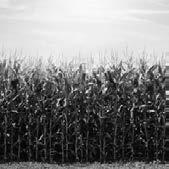



























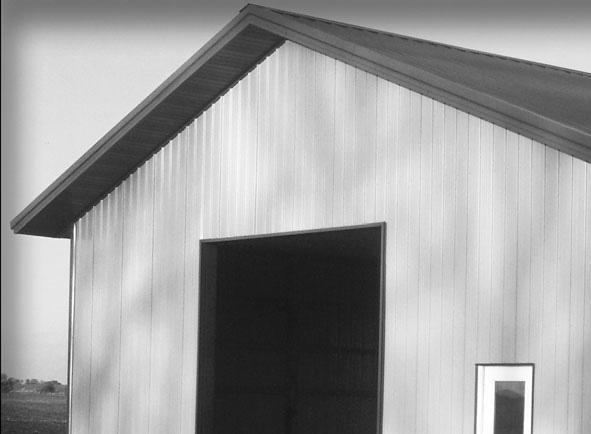

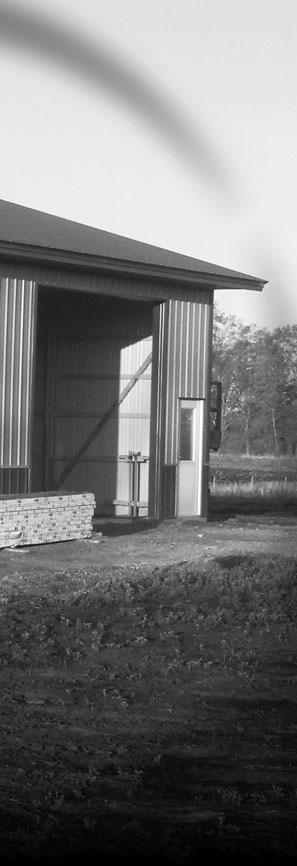












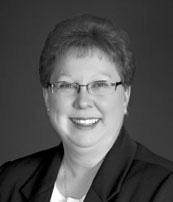






















When that runs out, Chris uses a hay shredder to feed them. If there is no other water source, they will lick through the frozen Tibbetts Brook that runs through the property, or eat snow. They seem calmer in winter, and they are not bothered by the cold.
“That’s one of the biggest things I like about them, too,” Chris said. “In the winter, we’ll walk around freezing and for them, it’s no big deal.”
They are adaptable to all weather.

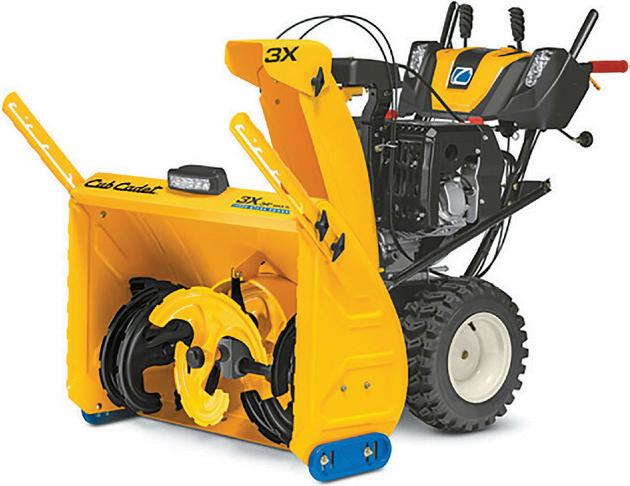

“They’ll be facing into a blizzard and in the summer it can be 90 degrees and they’re still running around,” Stacey said.

As the Kremers continue to work














their way through their first few years at Backroad Bison, they each have their own roles on the operation. Stacey has always done the bookwork and marketing, while Chris does most of the dayto-day operations, something Stacey would like to learn more about as well. They are currently involved in perfecting their grazing rotation, including a trample-seeding program for restoring the prairie. They are considering adding DNA testing to their fall working days so they can use the information to better inform them on culling. Together, they work on fencing; always, fencing.

Kremer page 10





about the magnificent animals they raise.




“It comes down to, you need to learn to work with them and not against them,” Chris said. “It is said, ‘you can lead bison anywhere they want to go, but if you want to push them where they don’t want to go, it won’t
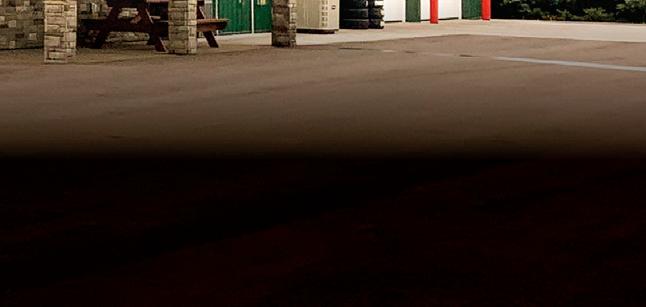
happen.’”



The Kremers enjoy sharing their animals with others, and have purchased a hayrack they use to safely give people tours of bison on pasture. Then, there are the other animals that make life interesting, such as their three horses, seven mini









donkeys, 12 KuneKune pigs, four dogs, many cats, chickens and ducks.


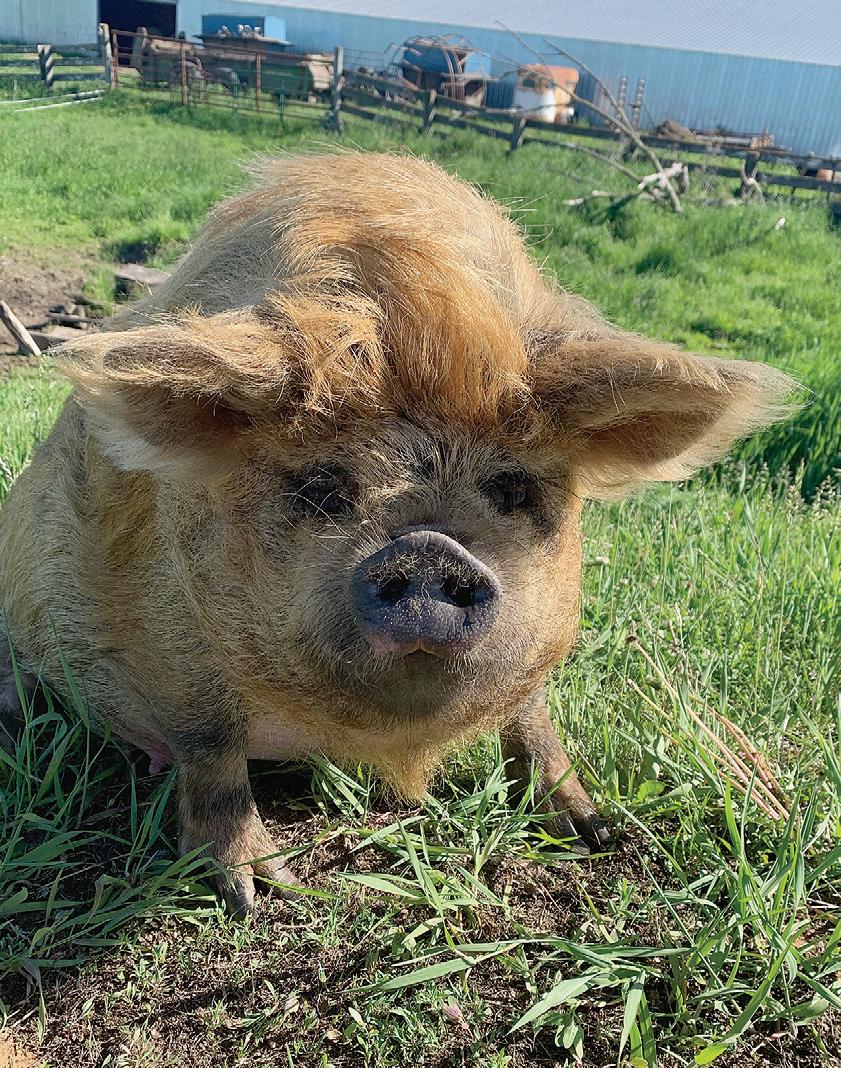
Chris summed up their love of their place on a dead-end road.
“The only thing better is if we’d have moved here 20 years ago,” he said.

CLOUD








CENTRE

































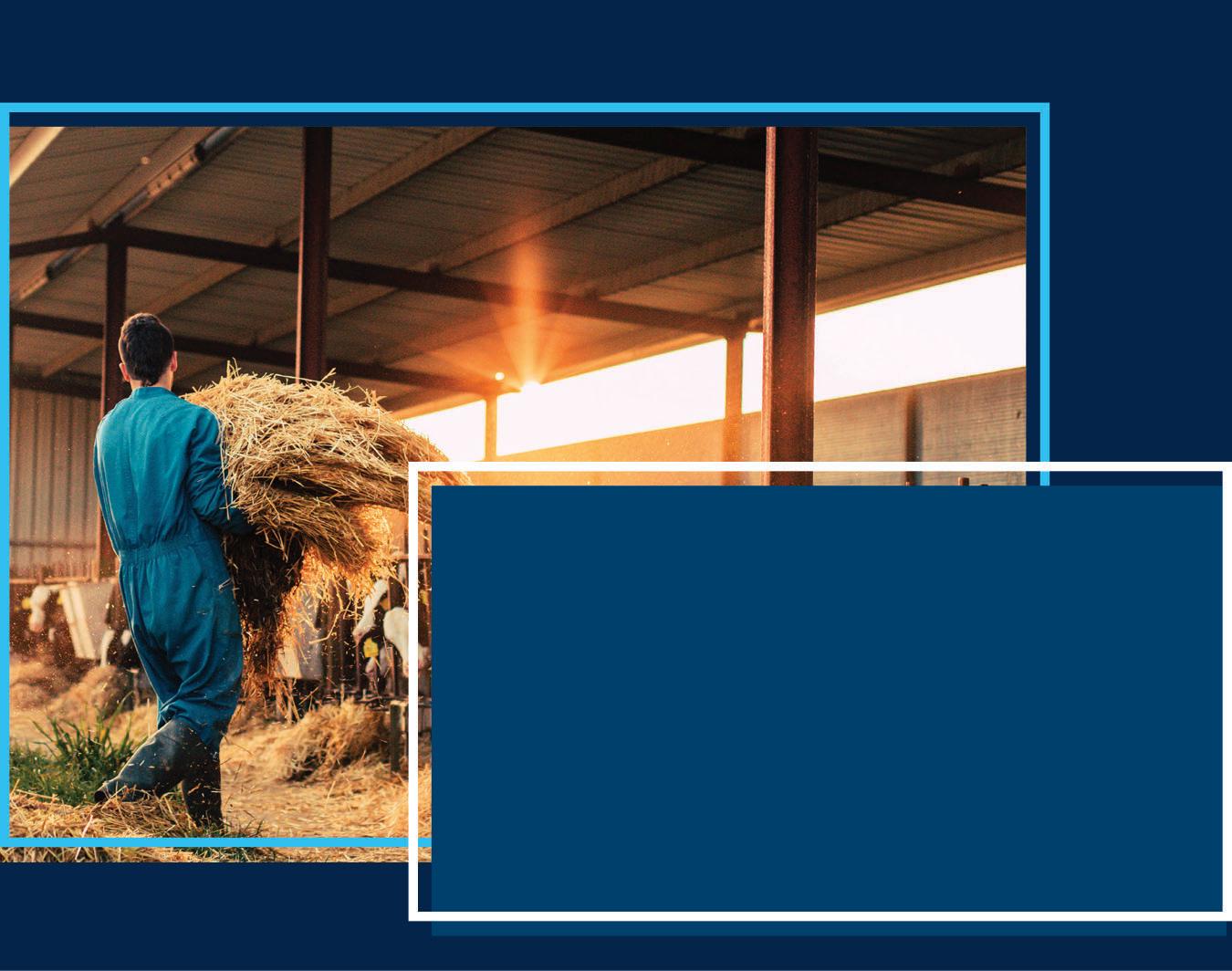


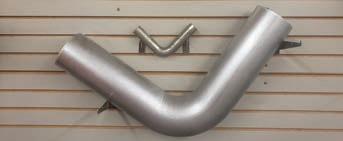

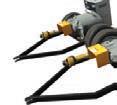


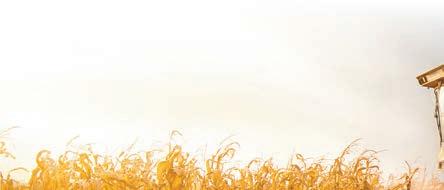

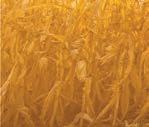







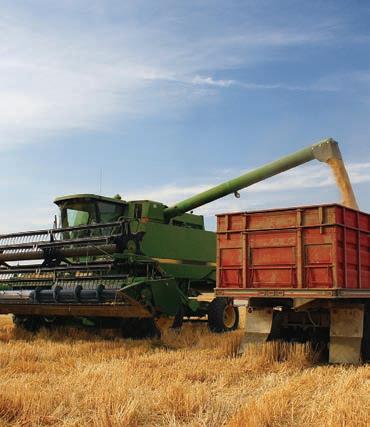







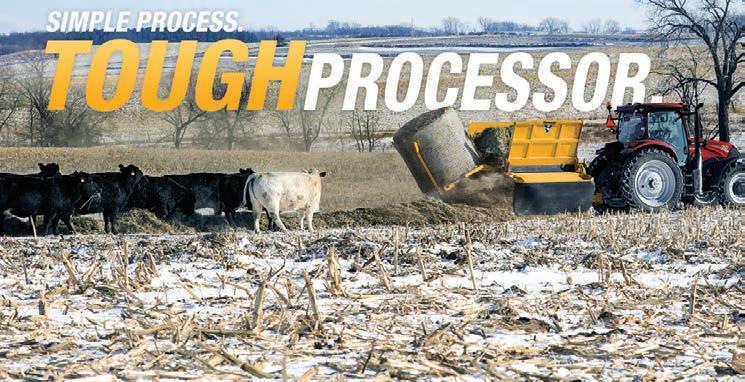
















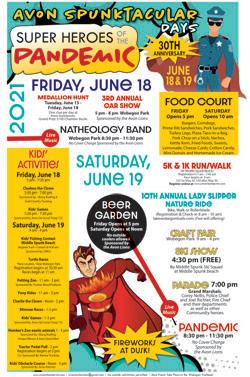











A horse enjoys its evening exercise Oct. 6 outside of Melrose.


Early farming and ranching operations used horses to pull plows, as well as work cattle. According to Texas Parks & Wildlife, between 1865 and the mid1890’s cowboys and their mounts (horses) herded 5 million cattle to markets north, like Abilene, Kansas. In Abilene there were railroads that brought cattle east and west.
Today, horses are used for a variety of tasks from competition to work. Many large cattle operations still use horses to herd cattle to different pastures. Horses are also used for show, trail riding and rodeos.


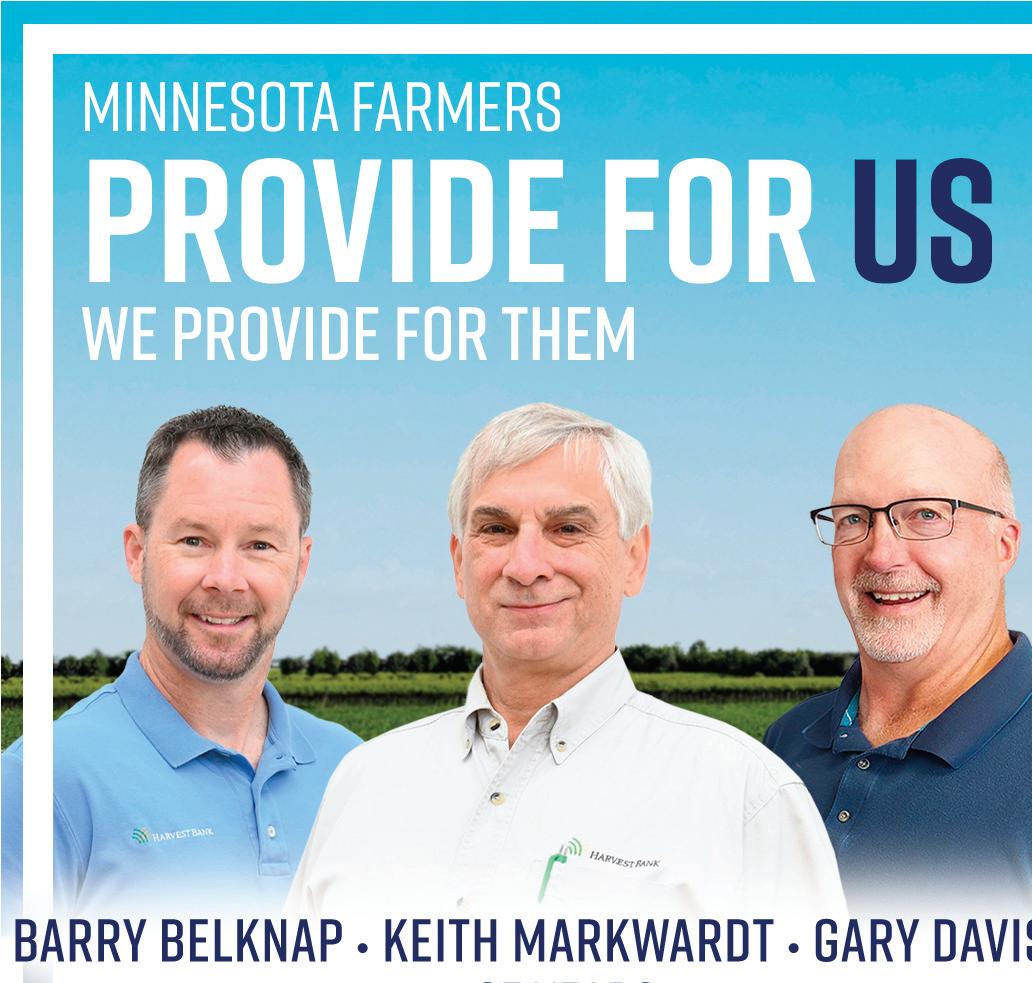

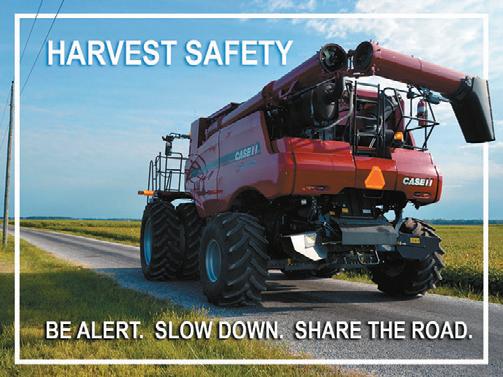




























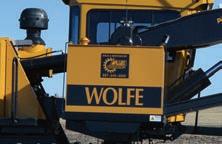

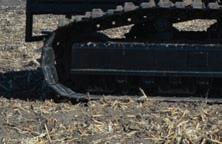


















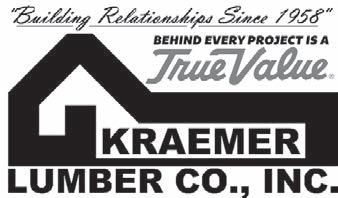
























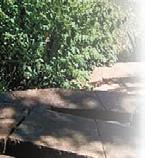








































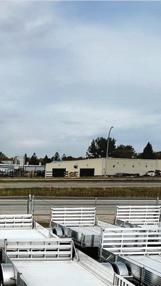































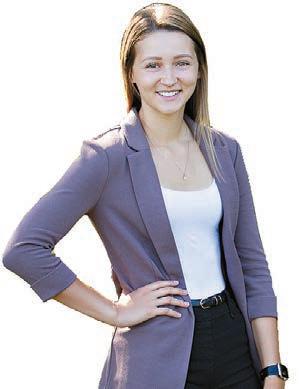






 BY TIFFANY KLAPHAKE STAFF WRITER
BY TIFFANY KLAPHAKE STAFF WRITER

PARKERS PRAIRIE – There is something in the air at L ‘Etoile du Nord Vineyard that resonates relaxation. Maybe it is the calming waters of Lake Irene, the cozy outdoor patio off the tasting room facing the lake, the rolling hills of grapes, or it might just be the scent of fermenting grapes. Whichever the case may be, the atmosphere at L ‘Etoile du Nord Vineyard is sure to engulf anyone.
In 2010, David Christianson and Polly Perkins were planning their upcoming retirement from their city jobs in Chanhassen. As Polly had inherited her parents’ place on Lake Irene near Parkers Prairie, they chose to move back to where Polly grew up.
Polly’s parents bought a property along Lake Irene in 1963. The land had been rented out to a local farmer, but in 2010, the farmer decided he no longer wanted to



keep farming that small piece of land. Dave and Polly wanted to find a way to use the land themselves.
“Dave wanted something so he could drive a
tractor, because we had a whole 10 acres,” Perkins said.


A family member who was with the University of Minnesota Extension suggested they try growing grapes. Polly and David knew nothing of the Minnesota grape and wine industry. They toured the horticulture research center in Chaska and a couple of other Minnesota wineries.
That winter, Polly ordered 600 grape plants. In spring 2011, they planted 1 acre of Marquette, Prairie Star, Petite Pearl and Frontenac Blanc grapes – two red grape varieties and two white grape varieties.

“This is a long-term investment,” she said.
making courses. For the class, Polly worked with other local wineries to learn about wine making in Minnesota. She learned the best management practices for sanitation, equipment and the wine-making process.
Polly made her first commercial wine in 2016 and entered wine in the 2018 Cold Climate Conference and won two silver awards with her Marquette and Frontenac Blanc wines.
“My wine is an expression of my land,” she said.
David and Polly use a vertical shoot position system on older grapes and a highwire system on all the newer grapes.
In 2014, David and Polly planted another acre with Sabrevois, Petite Pearl and Frontenac Blanc grapes.
and Polly joined the Minnesota Grape Growers Association and were able to help prune and pick grapes at other vineyards to learn how to do the work themselves.
Da v i d and
In 2017, David and Polly planted one-third acre of grapes; this time, they used a new variety called Itasca. In 2021, they harvested the first of the Itasca grapes.
“Everyone does it just slightly different, so you take it all in and then find what works best for you,” Perkins said.
Polly also signed up with the Viticulture Enology Science and Technology Alliance program, which is an online course through Missouri State University. That program teaches grape growing and wine
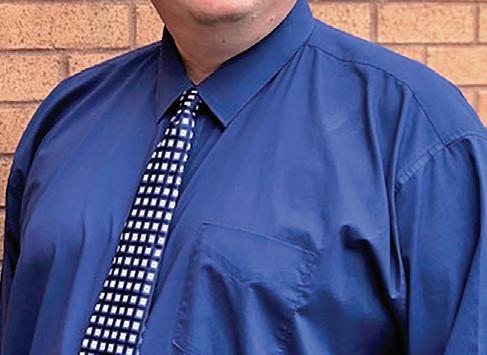

“Because of our cold climate, it takes five years for them to be fully grown instead of the recommended three years in warmer parts of the state,” Perkins said.
Originally, David and Polly were going to grow the grapes and sell them to a winery and let







 Matt Dirkes
Matt Dirkes














them make the wine. Polly soon realized she wanted to see the whole process through.
“The more I got to know and work with the plants, it just seemed wrong to not take the process all the way through,” she said.
From April through October, Polly spends her Mondays through Thursdays in the vineyard from 8 a.m. until noon each day, pruning and maintaining the vineyard. Each afternoon is then spent in the production room making and bottling
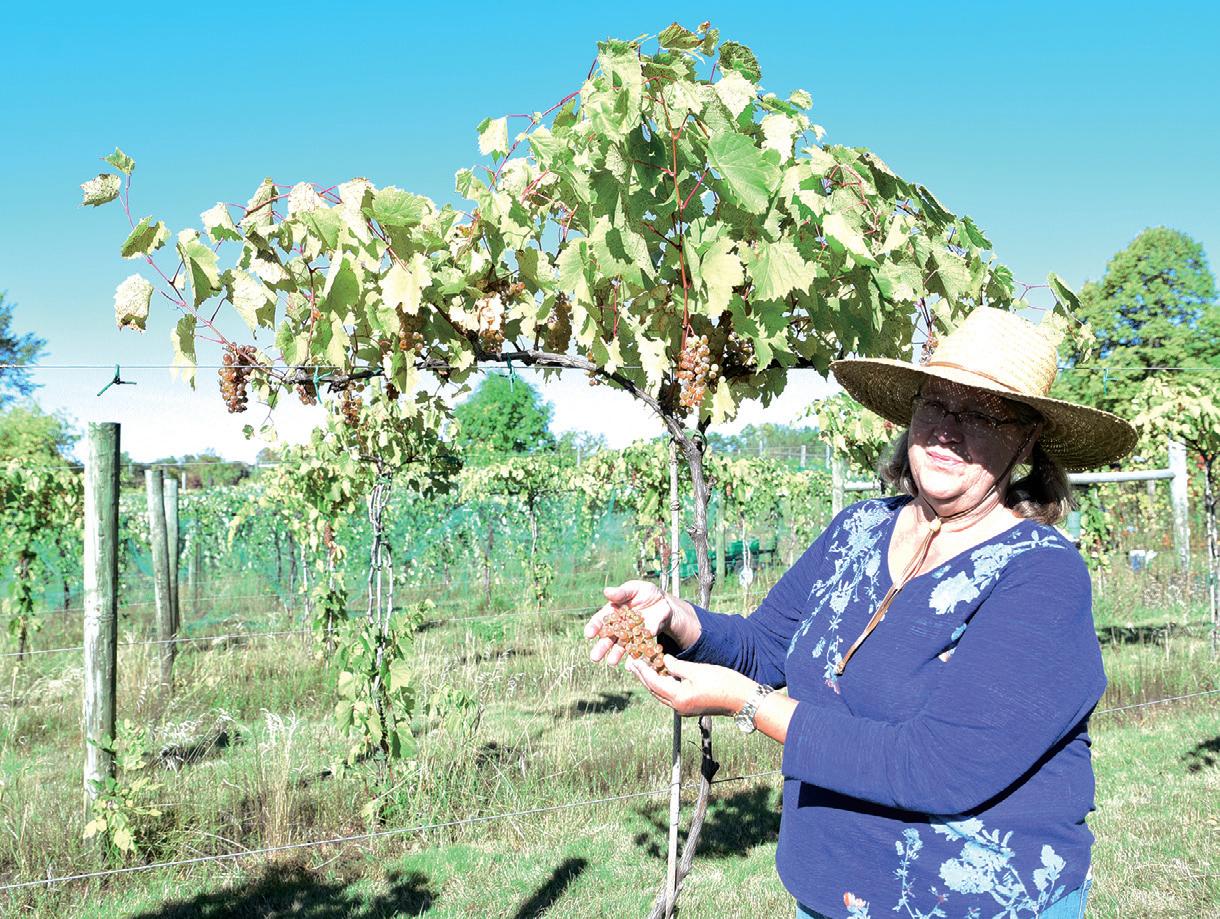






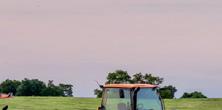



wine. They also hire a few high school students in the summer to help with vineyard maintenance. David and Polly are Climate Smart endorsed because of their use of continuous ground cover to help with weed control, erosion and to keep the grape plants maintained. So, a native plant is planted to keep the grapes under control. They also mow the grass and other environmentally friendly plants in between the rows of grapes. They are also certified through the Minnesota Agricultural Water Quality

cation Program.
















“If you have bare soil, not only do you get erosion but you will get wild growth and the grape vines will get out of control,” Perkins said.

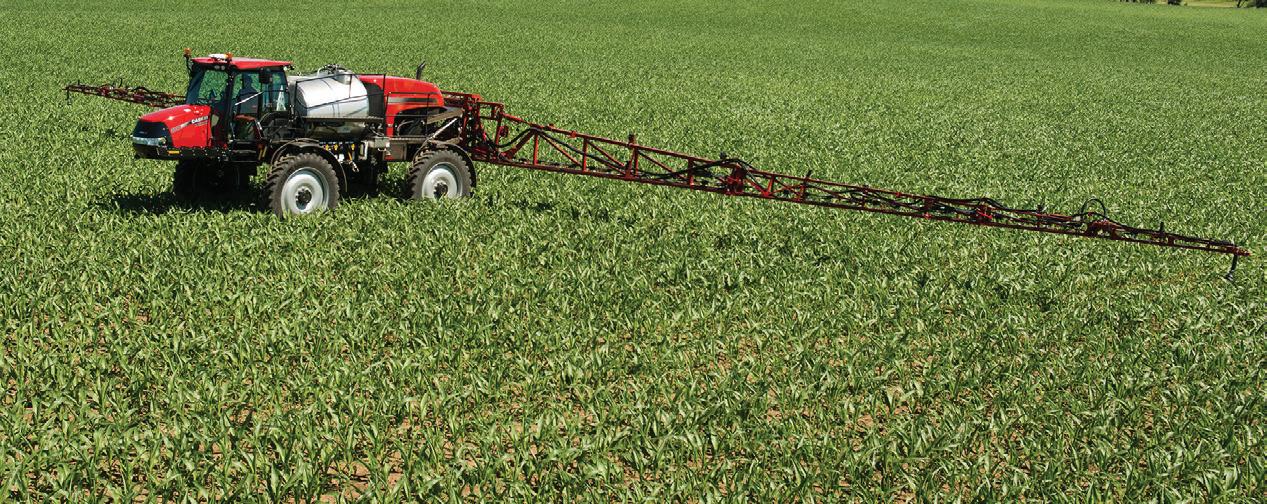
David and Polly put nets over the grapes in mid- to late-August before the grapes start to ripen. Nets are taken off before the grapes are harvested. This is when David gets to drive his tractor. Netting keeps the birds from eating the fruit as it ripens. They have also put up an 8-foot fence to keep the deer out, but there are racoons and turkeys that eat the fruit. Polly said some years they get a late frost in May that affects the yield in September.
In the winter, David and Polly stay busy fermenting, bottling, doing repairs and taking inventory for the next year.

“We do everything by hand,” Perkins said.



They produce 13 varieties of wine, including reds, whites, rosé, meads and a lemon wine. Polly buys Brianna and







Frontenac Gris grapes to make wine with as well. Those grapes are grown by vineyards near Browerville and Brainerd.



“What we do is all local,” Perkins said. “I only use Northern varieties.”











Polly also buys apples from a local orchard and makes hard still cider as well. Their cider is mixed with aronia berries to give it a strong and pleasant aroma. All the berries, including aronia, raspberries and haskap, are purchased from local farmers. The haskap berries are mixed with honey to create a mead wine. Of course, the honey comes from local bee keepers.
Lake Irene Lemon is their most popular wine among visitors. It is the only wine that is non-Minnesota grown. Polly imports lemon juice from Sicily, Italy.
“I had to learn to make wine from lemon juice, which was an interesting process,” Polly said.
Polly wanted to make the lemon wine
because of her nostalgic love for lemonade.
“When I was little, my grandma always had a pitcher of lemonade in the fridge, and we would sit on the porch by the lake and drink lemonade,” Perkins said.
Pairing wine with foods comes naturally for Polly, whose mother was a gourmet cook and would have wine paired with meals.
Other popular wines among guests are Frontenac Gris, Frontenac Blanc, Prairie Star, Lake Irene Dreams and Itasca.
The tasting pavilion of L ‘Etoile du Nord Vineyard is nestled between the colorful trees and calming waters of Lake Irene. The tasting

David Christianson drives his tractor to take the netting off of their grape plants Sept. 27 so the grapes can be harvested. When starting the vineyard David Christianson made it apparent that he wanted to do something that he could run a tractor for, so they chose to utilize their ten acres for grapes.
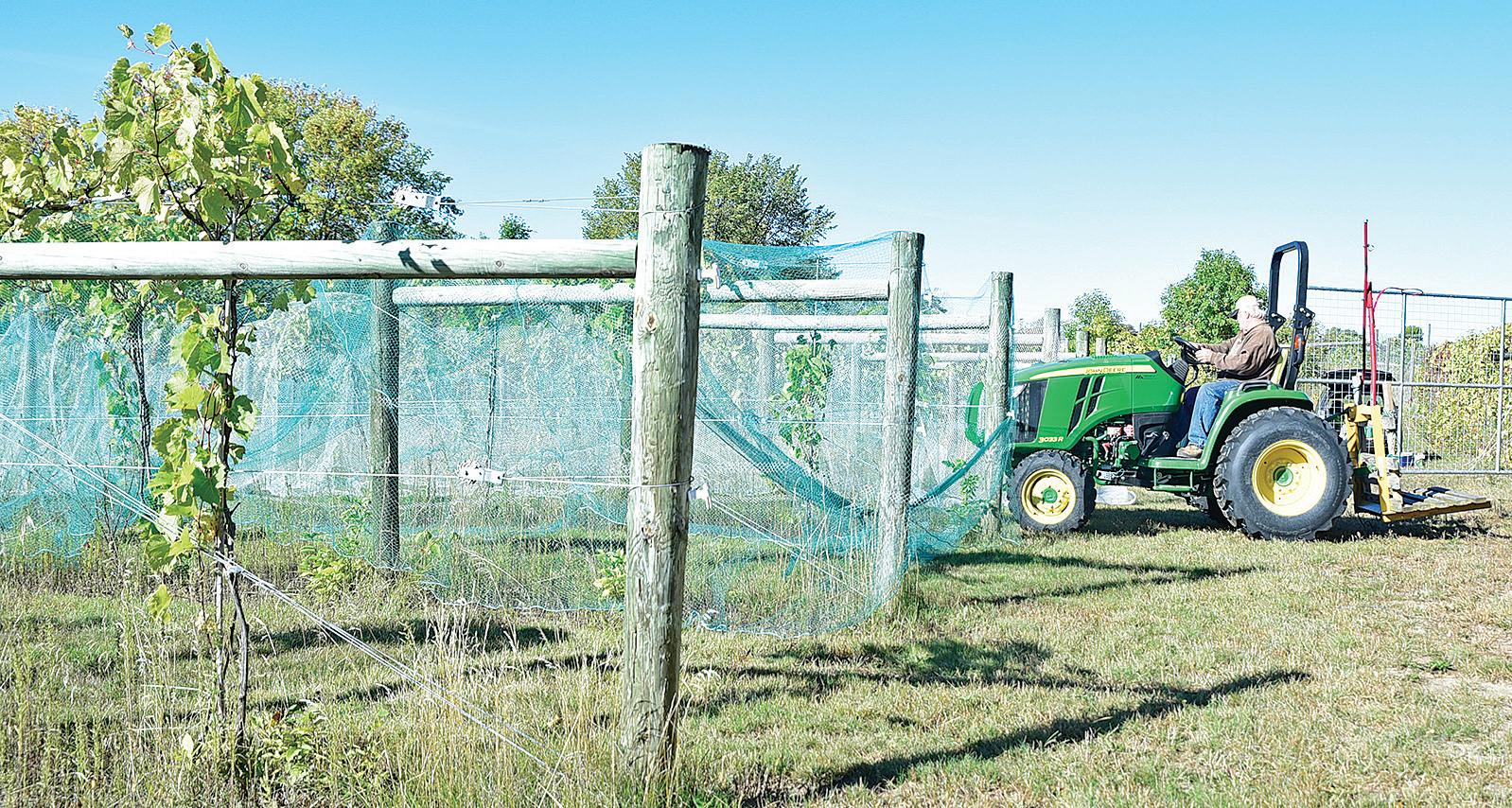
room is open every Friday, Saturday and Sunday from May through October for visitors to come, unwind and have a glass, or bottle, of wine.
“People love to come and sit by the lake and talk, like really connect with each other,” Perkins said.


They also carry


cheese from Redhead Creamery and Eichtens Cheese in their tasting room. David and Polly have had visitors from all over the United States, Canada and even as far as the Netherlands.
The name of their winery translates to The Star of the North and is the Minnesota state






motto. The French name mirrors so many of the varieties of grapes to call the vineyard home.
“We are on the northern edge of the grape growing industry in Minnesota,” Perkins said. “We are the vineyard of the north.”

























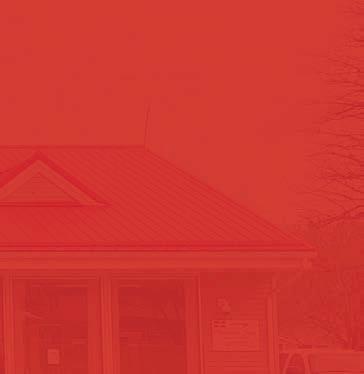
































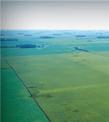












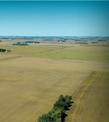


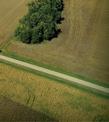

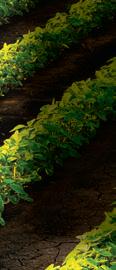



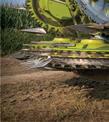





























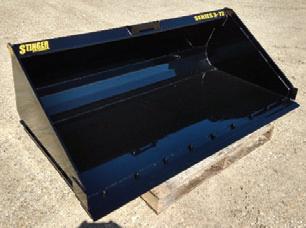

























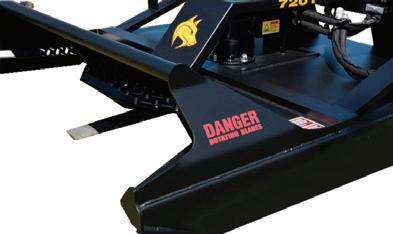




















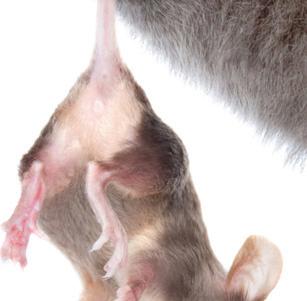



1 chicken carcass
2 carrots, chopped
2 stalks celery,
1 medium onion
3-4 garlic
6 cups water
1 tablespoon apple
vinegar
Salt and pepper
Italian seasoning
Preheat oven to 400 F. Roast soup bone and vegetables for 45 minutes, this will yield better flavor but is not necessary for the final broth.
Place all ingredients into a slow cooker. Fill with filtered water, enough to cover all ingredients.
Set on low and leave overnight or for about 10 hours. Once done, remove bones and vegetables. Line a strainer with cheesecloth and set in a large bowl. Pour broth through the strainer and discard solids.
Add salt, pepper, and Italian seasoning to taste.
4 tablespoons butter
1 onion, finely
2 teaspoons minced
In a large pot on medium heat, sauté onion and garlic with butter for about 8 minutes.
Add celery, carrots, green beans and chicken. Cover with chicken broth. Bring to a simmer. Cook until vegetables are tender, about 20 minutes.
Add remaining seasoning.

Mix ground bison with a drizzle of olive or avocado oil, minced garlic, salt and pepper. You may also add some shredded cheese to match your stuffing. Divide into large serving sizes and then divide again, shaping into two patties. Press the bottom patty, making a dent in the center.
Mix your chosen stuffing ingredients in a small bowl. Place a portion of the stuffing onto each of the bottom patties. Place top patties onto bottom patties and close around edges. Season with salt and pepper and grill to desired doneness.
Important: Always cook bison low and slow.




Season bison round steak with salt and pepper and grill or fry in avocado oil until desired doneness. Sauté vegetables in avocado oil and season with salt, pepper and garlic. (Sprouts are also yummy with this!) Serve on top of brown rice with soy sauce.
Important: Always cook bison low and slow.

In a large pot, warm milk over medium-low heat. Heat the milk until it reaches 180 F or when small bubbles start to form. Do not let boil.
Let the milk cool to 110 F. You can speed this up by placing the pot in a cool bath of water in the sink.
As the milk is cooling, place yogurt in a mixing cup or a small bowl to prepare for the next step.
Once the milk has cooled, take about a cup’s worth of warm milk into the bowl with reserved yogurt. Whisk until well incorporated.
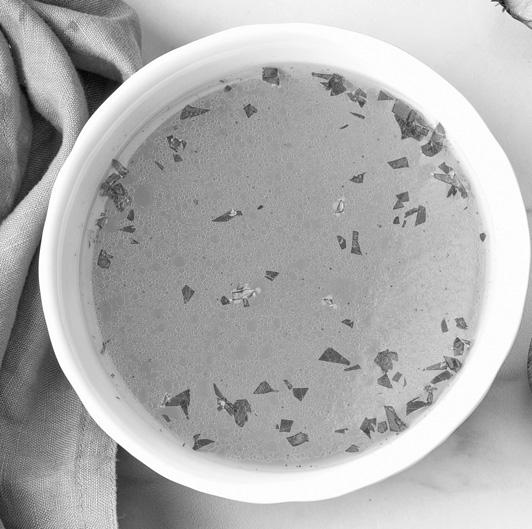
Pour the yogurt mixture into a large vat of warmed milk. Stir to combine.
Place empty Mason jars into a cake pan to prepare for the next step.
Pour contents into Mason jars. I either use a ladle or glass measuring cup.
Wrap the jars with a tea towel. You do not need to wrap to the top.
Place the jars in an oven to incubate overnight. The oven light should be left on to maintain a warmer temperature. The next morning, refrigerate.



















































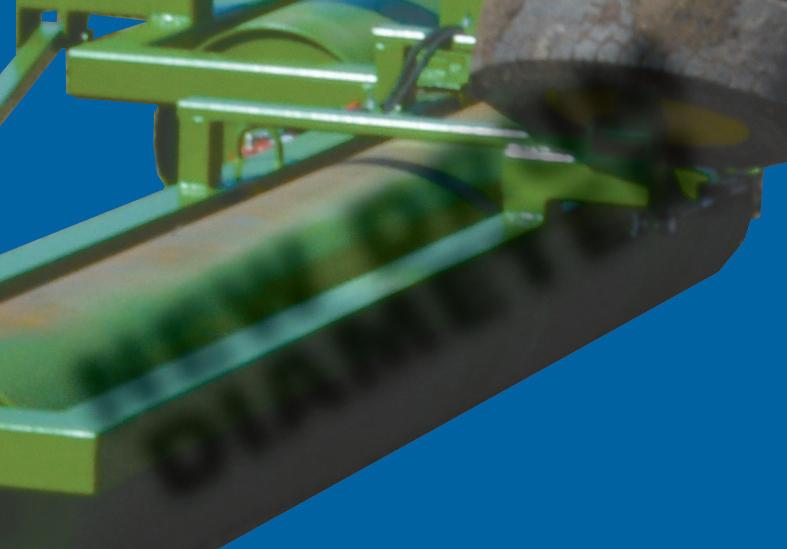





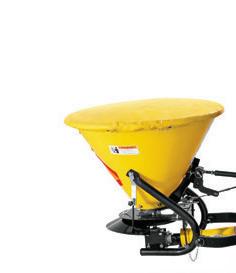

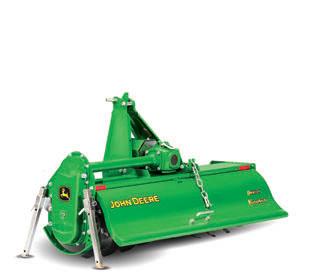
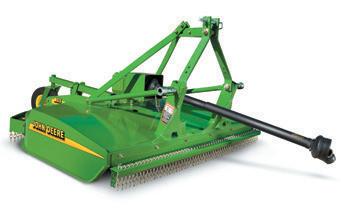
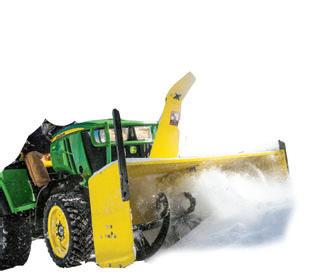




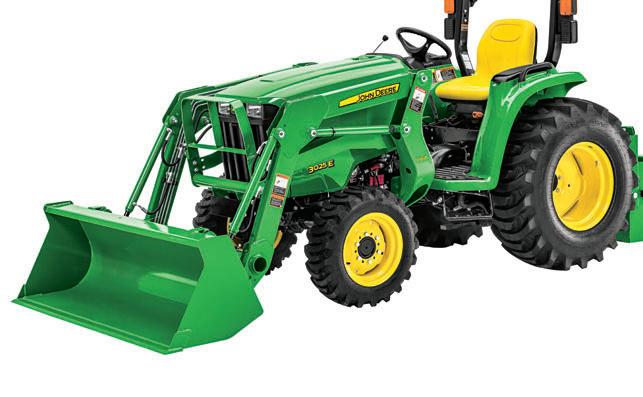





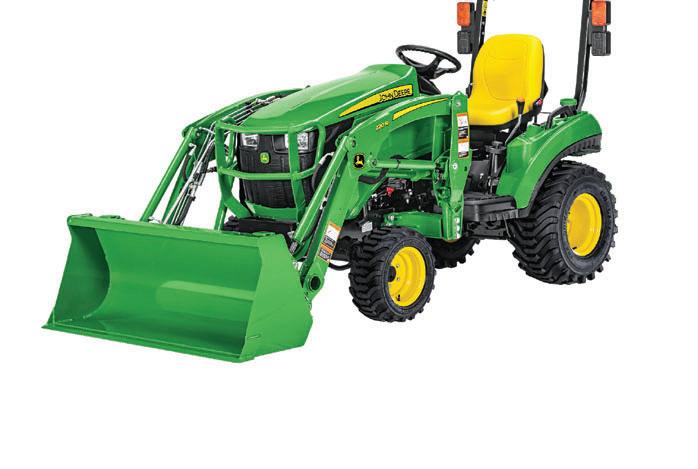

















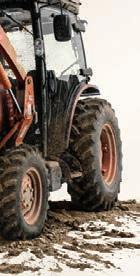























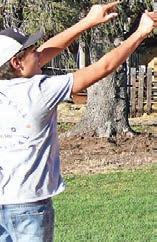











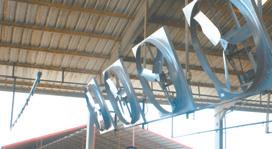

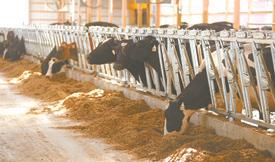






Besides the petting zoo and the ever-growing corn maze, the festival has a bouncy house on hand and offers a variety of pumpkin games and activities: pumpkin tic-tac-toe, pumpkin checkers, pumpkin bowling and pumpkin painting. Besides the free pumpkin that guests receive, they can also purchase an extra pumpkin to paint or else paint a wooden pumpkin for free.
There’s also the chance to play gravity box basketball.









“Once you shoot the ball in, it runs out [from the chute] to the tray,” Maus said.













With all the activities, guests get hungry and thirsty, so there are concessions for purchase.
“We have kettle corn, chips, home-made caramel apples, cotton candy, apple cider, hot chocolate, coffee, Gatorade, pop and water,” Maus said.
Two years ago, when Maus first mentioned his idea of planting lots of pumpkins and hosting a family festival, his father, Steve, and stepmother, Bethany, were supportive. His mother, Rachael Mauer, was on board as well.
“None of them said no or shot down the idea,”
Maus said.
The Maus family thrives on a can-do attitude. In fact, Maus’s parents as well as his siblings, Tosh, Emmett and Jax Mauer, all help with the festival.
“It’s a family effort,” Maus said. “Everybody
pitches in.”
His dad has caught the festival bug and often comes up with new ideas for games or ways to make the pumpkin sowing, weeding and harvesting easier. For instance, he rigs up the corn planter so that it will plant pumpkins, so that, unlike the first year of the festival, they no longer have to sow the 2-acre pump-
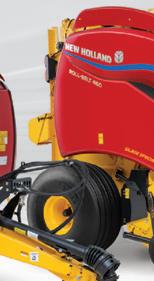


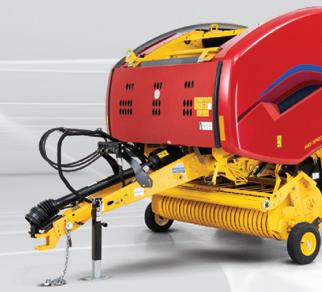

kin patch by hand. He also helps create the corn maze each year.
The festival crowds have been growing each fall. Plus, the family is opening the festival on one Friday this year to host a field trip for a few classes of grade-schoolers from Pierz. Maus is thinking he may have to expand his pumpkin patch next year.

“Judging by the numbers of people, we’re going to have to start upping the number of pumpkins we plant,” Maus said.

“More and more people keep coming.”


With the Maus Fall Festival getting bigger every autumn, preparing for it takes more time and effort. Maus does festival work on top of his already busy schedule. An eighth

grader at Pierz, he plays baseball during planting season and football during the harvest, which is also festival season. On school nights after practice, he gets home about 5:30, later if he has a game. He also participates in 4-H animal shows and activities. At home, he has chores to do that come with living on a farm.
“My brother [Tosh] and I feed the animals and try to help Dad as much as we can,” Maus said.
“There’s always stuff to be done.”
However, he loves the festival and knows that his work and his family’s efforts allow other families a chance to enjoy the outdoors in a rural setting.
“It takes a lot of hard work, but when everything is done, it’s rewarding,” Maus said.
Now that the festival has established itself as an annual event, the family wants to continue offering it, even after Maus graduates. Each year, any proceeds after costs have been put aside for Maus’s future college expenses. He hopes to pursue a career in agriculture.

“I like being with animals,” Maus said, “and I like operating things and being in charge.”
After launching a farm fall festival at the ripe old age of 12, it seems the journey to his career has already begun.











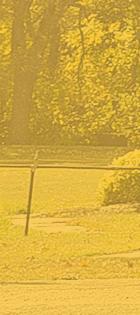


























Beef












mineral








cooked molasses



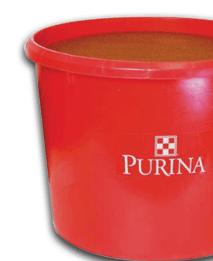



of the available forage



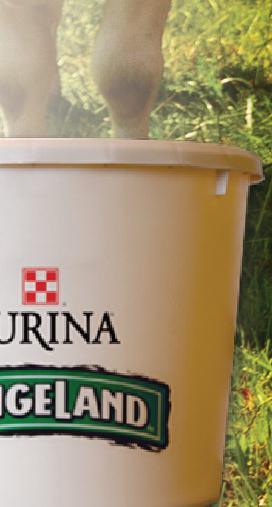















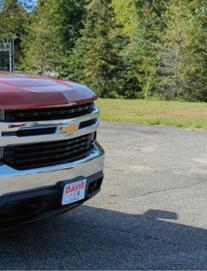


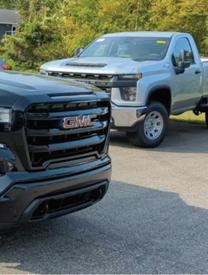
weather-resistant form. This line of minerals is designed for cow/calf and seedstock operators that need a free choice mineral supplement to assure that their cattle are getting the proper levels and ratios of all of the 14 essential minerals cattle need for health, growth, and reproduction. Wind and Rain® Mineral Tubs provide these benefits in cooked molasses formulas packaged in a non-returnable plastic tub. This gives the producer a mineral that is the ultimate in weather resistance, palatability and consistent consumption, all in its own mineral feeder.
